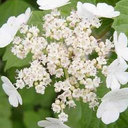Angelica sinensis polysaccharide protects rat cardiomyocytes H9c2 from hypoxia-induced injury by down-regulation of microRNA-22.
Keywords
Coimriú
BACKGROUND
The cardioprotective role of Angelica sinensis has been proven in previous studies. However, the effects of Angelica sinensis polysaccharide (ASP, major bioactive component of Angelica sinensis) on myocardial infarction (MI) remain unclear. This study aimed to investigate the effects of ASP on hypoxia-induced H9c2 cell injury as well as the underlying mechanisms.
METHODS
We constructed in vitro hypoxic model to mimic MI. Cell viability, proliferation and apoptosis were respectively measured by using CCK-8 assay, Western blot analysis, and flow cytometry assay/Western blot analysis, to evaluate cell injury after treatments. The effects of ASP pretreatment on hypoxia-induced injury were explored. Expression of miR-22 after treatments was determined by stem-loop RT-PCR, and whether ASP affected H9c2 cells via miR-22 was studied. Involvements of the PI3K/AKT and JAK1/STAT3 pathways were finally explored.
RESULTS
Hypoxia-induced decreases of cell viability and proliferation as well as increase of apoptosis were attenuated by ASP pretreatments. Hypoxia treatment up-regulated miR-22 expression, and the up-regulation was mitigated by ASP pretreatment. Effects of ASP pretreatment on hypoxia-treated H9c2 cells were mitigated by miR-22 overexpression while were augmented by miR-22 inhibition. Phosphorylation levels of PI3K, AKT, JAK1 and STAT3 were increased by ASP through down-regulating miR-22 in hypoxia-treated H9c2 cells.
CONCLUSIONS
ASP pretreatment attenuated hypoxia-induced H9c2 cell injury, possibly through down-regulating miR-22 expression. The PI3K/AKT and JAK1/STAT3 pathways were activated by ASP pretreatment via miR-22 in hypoxia-treated cells.


